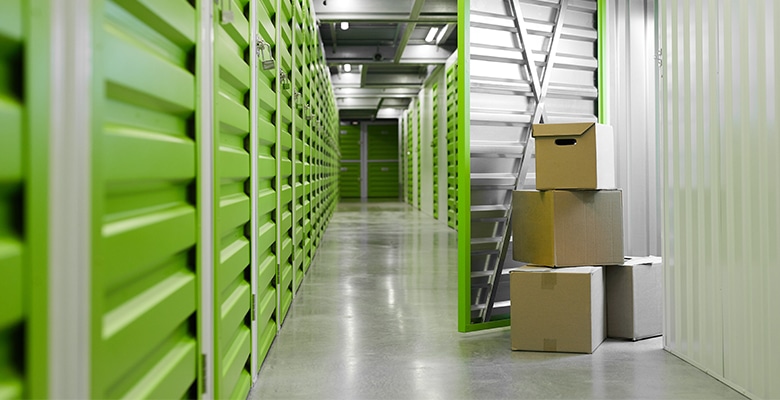- Size Matters: Good news: the majority of self-storage facilities offer multiple size units for rent. Most offer at least five sizes, including 5’x5’, 5’x10’, 10’x10’, 10’x15’ and 10’x20’ storage units. Many offer larger sizes as well. Make sure you get the size that is perfect for your needs so you don’t overpay to store your valuables.
- Assess your Access Needs: How often will you need to access your unit? Where is the unit located? What are the days and times that you can get into the facility? These are all important, and often overlooked features to consider in selecting the perfect unit for your needs. If you are planning on storing items long-term such as decorations or other seasonal items, make sure you can get to your possessions with ease at the times that fit your schedule best.
- Put Safety First: Although price should be a major concern, it is also important that you feel safe and secure when accessing your valuables. In the hustle and bustle of working through a move, it is easy to overlook things like your storage facilities lighting, if they have surveillance cameras, or if the facility provides on-site security personnel. Ask these questions when inquiring about your rental unit to give you peace of mind when it is time to get in or get out of your unit.
- Climate Control is Important: What types of items actually require climate control? While this varies by the climate of the location you are moving to, common items that would benefit from a climate-controlled unit are clothing, wood furniture, and upholstery. The CDC (Center for Disease Control) reports that mold grows on paper products, cardboard, ceiling tiles, wood products, dust, paints, wallpaper, fabric, carpet and upholstery. Although it does incur an extra cost, there is nothing more frustrating than paying to store your furniture and finding out that it is damaged or even ruined!
- Evaluate Your Valuables: An essential part of renting a storage unit is assessing the value of what you are storing versus the cost of storing these items. After assessing your needs in a unit, evaluate what month you will hit your break-even point based on the amount you’re spending on your unit and make sure that aren’t paying more to keep old furniture than you could pay to have something new that fits your new home perfectly. Although its tempting to be sentimental about a favorite couch or chair, sometimes a fresh start can be even more satisfying. Take the time to be assured you are making the best move for you.
- Think About Insurance: Sometimes life happens for storage facilities too! One way or another, make sure your possessions are covered. Before you look into coverage, be aware that many storage places offer protection for damaged or lost items- free of charge. Also, homeowners and renters insurance policies typically have payout for possessions stored off-premise so make sure you look over your existing policies before paying extra for a policy on your unit.
- Planning is Everything: Don’t waste money by signing a contract on a unit without having a clear plan and timetable for what you are going to do with the contents of your unit. Life gets busy and the months can add up with automatic payments coming out so make sure that if you’re planning on selling your items or moving into a bigger place soon you stick to it. If you are selling items, have clear pictures taken and know the contents of your unit so that you don’t end up using your storage space for longer than you need it.







